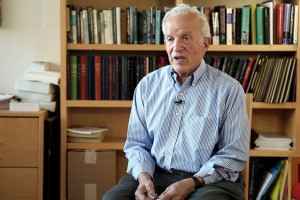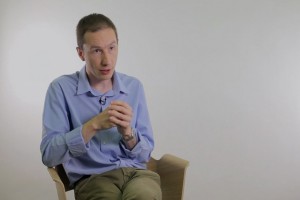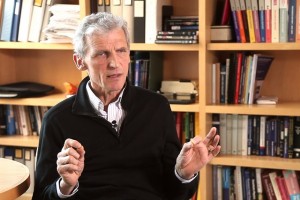Quantum Mechanics and Chaos
Prof. of MIT Daniel Kleppner on the uncertainty principle of quantum mechanics, the butterfly effect, and &la...
What is the difference between the static Casimir effect and the dynamic Casimir effect? Why hasn’t the dynamic Casimir effect been shown experimentally in its pure form? Harvard University Physics Professor Susanne Yelin speaks about the problems of obtaining light from nothing and problems of its registration.
The easiest is if you put one or couple of atoms or, for example, SQUIDs or something like that in the cavity to change this index of refraction, and there have been lately some experiments which kind of have succeeded with this. However, there has been another development in the last few years, perhaps starting in 2005, I would say, this is when this first started, [it has] become a bit bigger, which is called optomechanics or nano-optomechanics. And the idea of that is that you have something like you mirror, only just really miniaturized — so really kind of a cantilever, nanocantilever, which is just a few nanometers big.
There are basically two main problems in measuring that. The one, as I said, it’s very, very hard to move anything as fast as a light wave. Even if it’s not an optical light wave, even if it’s only a microwave, it still means that you have to move something of the order of million times per second or more. The second problem is that, even if you can do that, what do you produce? You produce one photon, that means one quantum of the light field or two or perhaps three, if you are really good. And to measure those is just extremely hard. So imagine you have a microscopic experimental setup, which basically has mirrors on both sides, and now you have to have a detector which is usually somewhere outside of the cavity and have to make sure that you somehow measure if there are two quanta of light somewhere showing up in inside the cavity. So even if people tried it and if people measured it, usually the noise from the environment is considerably higher than that. And the combination of these two problems is the main reason that there’s no really convincing evidence that this clean form, original form of the dynamic Casimir effect works.
What is the near future of trying to find this theoretically, experimentally? So the first experiments actually have been done, where the dynamic Casimir effect has been seen in optomechanics, but they don’t really create photons out of nothing — they create a different wavelengths of photons out of a higher or lower energy, where usually that shouldn’t be possible. The magic is not quite as convincing as if the photons would come out of nothing, but it’s a first step.

Prof. of MIT Daniel Kleppner on the uncertainty principle of quantum mechanics, the butterfly effect, and &la...

Theoretical physicist Xavier Bekaert on quantum interaction, coupling constant, and properties of gravity

Physicist Wolfgang Ketterle on achieving superfluidity, atoms marching in lockstep, and room temperature super...